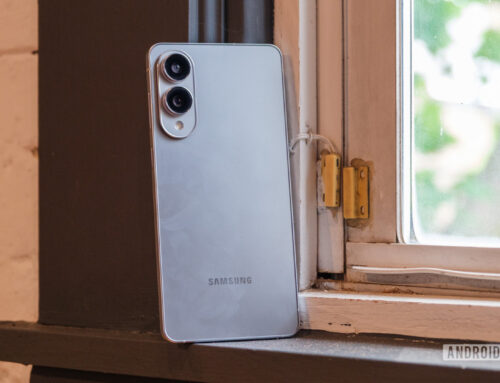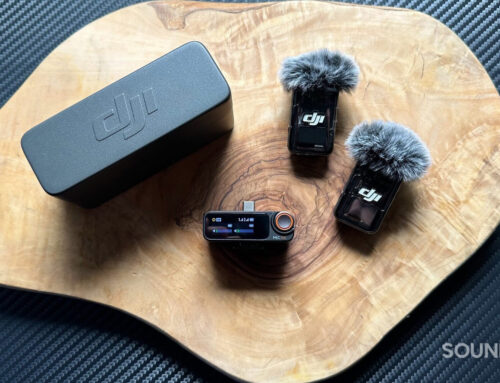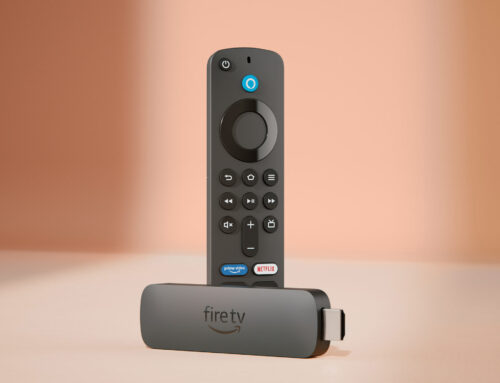
In our fourth edition of the “How it Works” series, we’re going to talk about NFC, or near field communication, a technology that’s being adopted by more and more smartphone and tablet makers and mobile operators.
When talking about NFC use in the mobile ecosystem, you’re going to hear the term paired with mobile payments most of the time, because that may be one of its most important uses in the future. But there are other NFC uses on mobile devices you should be aware of, some of which are already available to Android device owners.
What is NFC?
So you know what NFC stands for, but what is it really about and how does it work? Near field communication, is a short-ranged wireless communications standard that allows two devices to exchange data when in the proximity of each other. Yes, NFC is similar to Bluetooth technology if you will, allowing two devices to interact with each other. But NFC works only in very close proximity, up to 20cm (7.87 inches) in theory, although its actual optimal operating distance is somewhere around 4cm (1.57 inches) or less. On the other hand, Bluetooth can pair devices up to 50 meters apart.
In order for NFC features to be available on smartphones and tablets, those mobile devices need to contain a NFC chip that would handle any NFC communications. Therefore, if your current Android handset or tablet does not have one such chip inside, it won’t be able to handle mobile payments and offer other NFC-based features.

Image via Travel Technology
NFC is a technology built upon radio-frequency identification, or RFID, which allows a gadget to send radio waves to another gadget or to another RFID-enabled tag and trigger a certain action.
Two of the advantages that NFC has over other wireless communications technologies are power efficiency, very important in mobile devices, and relative security, as third-party attacks on NFC devices would require the “hacker” to be in very close proximity of the target in order to access NFC-data exchanges. Chances are that, even if NFC is not 100% secure from third-party attacks, hackers won’t be able to get in between your mobile device and the other NFC device, since they’ll only be able to interact at around 4cm or less.
NFC tags – Samsung TecTiles, Sony SmartTags, and others
Because RFID takes advantage of the electromagnetic fields generated by radio waves to transfer data between two RFID-enabled devices, that means that not both of the RFID tags need to be powered by an independent power source. In case this sounds familiar, that’s because NFC is not something smartphone makers have invented.
In fact, you may have used NFC technology for quite a while now without realizing it. Just think about the last time you touched your metro pass against a ticket reader to have your ticket scanned. That sort of action is also based on NFC/RFID tech.
In practice, this RFID technology allows NFC-enabled smartphones to read unpowered NFC tags (such as Samsung’s TecTiles or Sony SmartTags), which are pre-programmable (and re-programmable) with certain data that can trigger a response on the smartphone. The unpowered NFC tag is in this case powered by the smartphone, in which case NFC is using a little more energy than when pairing with a NFC device that has its own power source.
Here’s a presentation video from Sony that shows some interesting use cases for NFC tags:
NFC vs Bluetooth and Bluetooth 4.0
There are various wireless technologies that can be found on modern mobile devices, including cellular connectivity (3G, 4G), Wi-Fi, Bluetooth, and NFC. However, it’s just the last two that work exclusively in close proximity (from a few centimeters to a few meters), while the first two offer wireless connectivity over larger distances.
NFC is better than Bluetooth when it comes to mobile payments and other activities, as it will use less power and it will instantly pair with the other NFC-ready device. Furthermore, NFC operates on a much lower frequency (13.56MHz) compared to Bluetooth (2.4-2.5GHz).

Bluetooth on the other hand offers support for higher data transfer speeds, and should be used when speedier data transfers between various Bluetooth-ready devices are needed. Bluetooth 4.0 is the latest standard version of this communications protocol and it’s also known as Bluetooth Low Energy, because it’s more battery-friendly.
NFC and Mobile Payments
In order to enable a mobile payment of any kind, you need more than just a NFC connection. The smartphone requires a secure application to handle the users’ credit cards, debit cards, tickets, coupons and other elements that would allow customers to complete a purchase in a store.
Even so, that doesn’t mean your NFC-enabled phone can be used to pay for stuff anywhere you go, because not every store out there has NFC readers installed. Without NFC readers in place, the smartphone won’t be able to connect to the cash register or initiate any data transfer.
As some of you already know, there are plenty of parties interested in mobile payments, from Google, Microsoft, and Apple (reportedly), to mobile operators and credit card companies. So far, we have just a few mobile payments alternatives out there, and not all of them are available to the Android crowd.
Google Wallet
Google’s own NFC-based mobile payments technology is called Google Wallet and it was launched in late May 2011. While the search giant would have wanted Google Wallet to take off and become a popular payment method, both with stores and Android device users, Google Wallet is an under-performing project so far. There aren’t enough NFC-ready Android devices in stores, and not all carriers like the idea of Google becoming the middleman between their subscribers and retailers.

Google Wallet is available as an application on NFC-enabled devices, such as Sprint’s Galaxy Nexus, and it can store data such as credit cards, debit cards, loyalty cards, or gift cards. With Google Wallet, the smartphone user can pay at locations equipped with the MasterCard PayPass or the Visa payWave systems.
Most notably, US carriers are reluctant to let users enjoy Google Wallet, for reasons we’re going to analyze later.
What’s worth remembering about Google Wallet is that it works by touching the smartphone against the NFC readers installed in stores. The app has various security measures in place such as a Secure Element, a chip that contains encrypted user information on a phone, and a PIN that needs to be entered in order to activate the NFC antenna. Add to that the phone’s PIN and/or password, and you have a relatively solid security system in place protecting your banking details.
Even so, security concerns were raised a few months ago, when security researchers revealed that third parties could access certain card information stored on the Google Wallet. Some of those security issues have been fixed by Google in the mean time.
In the US, Google Wallet only comes pre-loaded on Sprint’s NFC-enabled Android handsets, mostly because of ISIS.
ISIS
When I say ISIS, you might think about the Egyptian goddess, but I’m actually talking about a joint mobile payment endeavor between Verizon, AT&T, and T-Mobile, which will be available to the subscribers of these three major US carriers in the near future. That’s why some of these carriers will block competing services like Google Wallet, in order to “encourage” users to move to their own payment system once it becomes available.
ISIS too is based on NFC, although, unlike Google Wallet, carriers will store the Secure Element on the SIM card instead of placing it on the phone. In case you’re wondering, ISIS is not available at this time, although the tree carriers are testing the technology and plan to further develop it.

Sprint’s Mobile Payment System
For some reason, Sprint stayed away from an unholy matrimony with ISIS’s creators, and it was the carrier chosen by Google to launch Google Wallet with last year. However, Sprint is changing its mind and the mobile operator is now interested in deploying its own mobile payment solution, so we shouldn’t be surprised to see Sprint come up with its own NFC-based payment service for smartphones and tablets in the near future.
PayPal
You’d expect the largest online payment-handling company to be already part of the NFC mobile payments wave, but that’s not exactly the case.
PayPal has already sued Google, alleging that Google Wallet is using technology previously developed by PayPal, but the company is yet to deploy a NFC-based mobile payment of its own. Instead, PayPal has launched PayPal Here, a credit-card reading dongle that can be paired with mobile devices. The device lets store owners accept payments from smartphones and tablets. However, the dongle can only read physical credit cards, and there’s no NFC support available at this time.
Square
Another mobile payments company, Square, offers store owners a dongle that can read credit cards. The technology doesn’t require NFC support and works in a similar manner with PayPal’s payment processing dongle, although the two devices have different proprietary designs.
Other NFC Uses
While everyone is focusing on mobile payments when it comes to NFC devices, the fact is the technology can be used to trigger all sorts of other actions. Samsung, Sony, and other companies, have such NFC tags that can be placed around the house, car, or work place and programmed to start various location-based actions on the phone. All you have to do is bring the phone in the proximity of the tag to activate it and trigger the kind of actions you want to happen in a certain location.

Image via Libramation
In case you’re interested in such NFC stickers, you should be looking for Samsung’s TecTiles or Sony’s SmartTags in stores and start customizing your mobile experience.
One interesting NFC use has been demoed by Microsoft a few days ago, when the company unveiled its next-gen major mobile platform update, Windows Phone 8. In addition to including NFC support in WP8 to support the mobile payment needs, Microsoft will use the technology to share data between NFC-ready devices, including contacts, calendars, websites, and others. The company also showed the audience that developers can implement NFC support in their existing apps, which would allow users to initiate various in-app actions by simply touching two mobile devices. As a use case, Microsoft demoed multiplayer gaming launched via NFC pairing.
This shows that the use of NFC can be taken to a whole new level in the future, once enough NFC-ready devices will be available in the wild.
Furthermore, given the open nature of Android, you may find yourself customizing your NFC-enabled smartphone to perform a variety of custom actions in certain locations.
To give you an idea of what you can do with NFC tags (and how to) check out this excellent video from XDA-developers’ Adam Outler.
Do I want a NFC-ready Android device?
NFC may not be one of the top five factors to consider when purchasing a new Android device right now, but as we have already shown you, NFC adoption is growing steadily. More companies and end-users are finding NFC attractive and useful for various application. That means that if you buy a high-end Android device, even if you’re not interested in NFC support, you may find that the device comes with NFC support on board.
In time, we expect more Android devices, from low-end to high-end, to come with NFC features on board, especially once NFC mobile payments become popular with the crowds. Once NFC-based mobile payments take off, we’re going to see more developers focus on NFC use and create more apps that take advantage of NFC technology.

NFC Android Devices
In case you’re looking for a NFC-ready Android smartphone right now, should check out these various devices from top Android makers:
- Samsung: Galaxy S3, Galaxy Note, Galaxy Ace 2, Galaxy S2, Galaxy Nexus, Nexus S/Nexus S 4G, Galaxy S Blaze 4G, Galaxy S Advance
- HTC: Amaze 4G, EVO 4G LTE, One X
- Sony: Xperia S, Xperia P
- Huawei: Sonic
While these devices come with NFC on board in theory, you should make sure the device you choose actually has NFC on board, as NFC support varies depending on the region where the device is sold.
This article, How it Works: NFC (near field communication) , was originally published at AndroidAuthority.com – Your Android News Source.








Leave A Comment